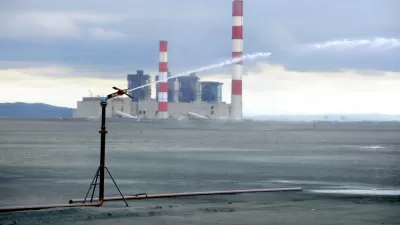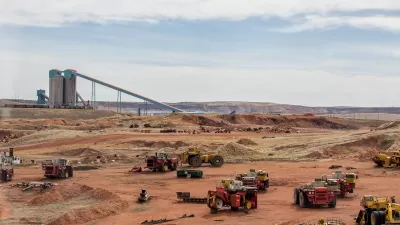A familiar refrain: the EPA proposes new regulation of energy production, and the utility industry responds that new requirements will increase costs. The Center for American Progress recently looked back at how clairvoyant those claims proved to be.
Tina Casey picks up on the findings of a recent report from the Center for American Progress (CAP) that responds to recent outcry by the coal and utility industries over the new, perceived threats in the “war on coal”—namely, “a pair of divisive E.P.A. regulations that are to set new limits on carbon pollution from coal-fired power plants.”
Casey describes the report as “a history of similar warnings about coal regulation”—predictions which failed to account for the positive impact of innovation, including the economic benefits of improved public health. A few examples:
- 1977: "Utilities and related industries predicted an 'economic disaster' from new pollution scrubber regulations. By 1981, the National Commission on Air Quality determined that was wrong, and the bipartisan group had the figures to prove it. The estimated cost of installing new equipment was $16.6 billion in 1978, while the economic benefits of improved air quality ranged from $4.6 billion to $51.2 billion per year."
- 1989: "In response to the acid rain bill, the lobbying group Edison Electric Institute (EEI) issued a detailed report predicting a dramatic rise in electricity rates over a 20-year period. CAP’s own analysis of actual utility rates in 2009 — 20 years later — showed that the prediction was 'flat-out wrong.'"
In response to recent claims by the coal and utility industries that new regulations by the EPA would pass the cost of implementation down to consumers, casey and CAP describe a different reason for potential increases in utility rates: “the main driver of utility rates will not be the power plants or the fuel they use, it will be the urgent need to overhaul the nation’s aging, badly outdated electricity distribution and transmission grid.”
FULL STORY: ‘War on Coal’ is Not the Real Reason Your Utility Rates Will Go Up

Alabama: Trump Terminates Settlements for Black Communities Harmed By Raw Sewage
Trump deemed the landmark civil rights agreement “illegal DEI and environmental justice policy.”

Study: Maui’s Plan to Convert Vacation Rentals to Long-Term Housing Could Cause Nearly $1 Billion Economic Loss
The plan would reduce visitor accommodation by 25% resulting in 1,900 jobs lost.

Planetizen Federal Action Tracker
A weekly monitor of how Trump’s orders and actions are impacting planners and planning in America.

Wind Energy on the Rise Despite Federal Policy Reversal
The Trump administration is revoking federal support for renewable energy, but demand for new projects continues unabated.

Passengers Flock to Caltrain After Electrification
The new electric trains are running faster and more reliably, leading to strong ridership growth on the Bay Area rail system.

Texas Churches Rally Behind ‘Yes in God’s Back Yard’ Legislation
Religious leaders want the state to reduce zoning regulations to streamline leasing church-owned land to housing developers.
Urban Design for Planners 1: Software Tools
This six-course series explores essential urban design concepts using open source software and equips planners with the tools they need to participate fully in the urban design process.
Planning for Universal Design
Learn the tools for implementing Universal Design in planning regulations.
Caltrans
Smith Gee Studio
Institute for Housing and Urban Development Studies (IHS)
City of Grandview
Harvard GSD Executive Education
Toledo-Lucas County Plan Commissions
Salt Lake City
NYU Wagner Graduate School of Public Service




























